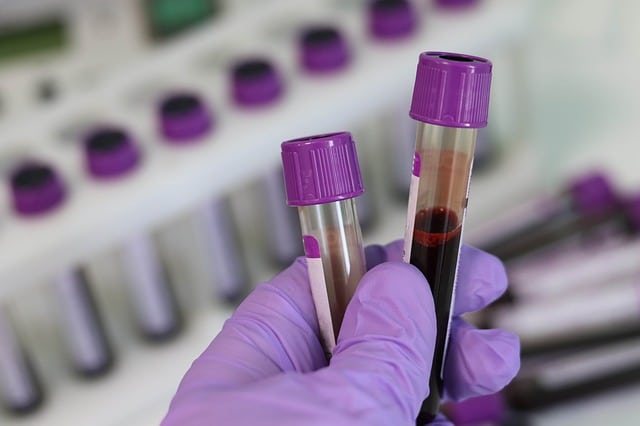MOBILion Debuts SLIM Technology
Although mass spectrometry (MS) has made enormous progress over the last 20 years in improving its sensitivity, accuracy and speed, further developments are still required. The need is especially critical when working with biological samples, such as peptides and lipids in blood or tissue, due to the analyte’s wide dynamic range and minute amounts.
The commercialization of new ion mobility spectrometry (IMS) has been one chapter in the development of MS. IMS is a gas-phase separation technique that can measure the size-to-charge ratio prior to the MS’ measurement of mass-to-charge ratio. IMS is particularly useful for gaining structural information, with IMS-MS providing information on ions’ size, shape, charge and mass. SLIM (Structures for Lossless Ion Manipulation) aims to change the game by increasing the technique’s sensitivity, speed and usability.
“SLIM provides extreme resolution to identify the most challenging molecules, for example, resolving isomers within a two minute analysis time.”
MOBILion, which exclusively licensed SLIM technology from the Department of Energy’s Pacific Northwest National Laboratory for applications in the life sciences, has now announced its commercial plans for SLIMS. Founded in 2016, MOBILion plans to launch a beta version of the system next year which will integrate with mass spectrometers. The company is also developing a stand-alone system. In November, MOBILion Systems raised $15.4 million in Series A financing, led in part by Agilent Technologies, one of the world’s largest MS firms. SLIMS will be integrated with Agilent Technologies’ Q-TOF MS, in what the company plans to be the first in several partnerships.
SLIM is characterized by a redesign of IMS technology with the introduction of a 40-foot flight path condensed into an instrument the size of small laptop, according to MOBILion, and a flight tube of parallel aligned electrodes resulting in faster and increased ion separation as well as lossless transition. In addition, the technology is designed several of the other constraints on current LC-MS technology, such as speed, cost and uptime. This, in addition to size, makes the technique more amenable to potential applications in clinical testing and patient diagnostics.
To further expand SLIM development, MOBILion Systems has partnered with the Complex Carbohydrate Research Center (CCRC) at the University of Georgia. Principal investigators Drs. Lance Wells and Michael Tiemeyer will perform SLIMS glycans and glycoproteins research, including the impact of glycan structure on glycan function.
IBO spoke with Melissa Sherman, CEO of MOBILion Systems, about the partnership and its potential to demonstrate SLIM’s technical advantages and commercial potential.
Specifically, what projects does MOBILion have planned with the CCRC for utilizing SLIM technology for the research of glycans and glycoproteins?
At the Society of Glycobiology meeting, Drs. Lance Wells and Michael Tiemeyer presented data revealing that SLIM analysis provided a 90x improvement in throughput, providing more comprehensive glycan analysis in less than five minutes per sample analysis time. High-resolution, high-throughput glycan analysis demonstrates the impact SLIM-MS has for enabling biomarker discovery, accelerating population-scale studies required for biomarker validation, and addressing the “isomer problem” associated with the characterization of released glycans.
Does MOBILion have any other partnerships planned for better understanding glycobiology analysis?
MOBILion plans to work with multiple academic and pharmaceutical researchers to advance the field as a whole.
How can SLIM technology replace LC-MS? For what applications is this possible?
SLIM- MS is a high-throughput, high-resolution, easier-to-use alternative to LC-MS. SLIM provides extreme resolution to identify the most challenging molecules, for example, resolving isomers within a two minute analysis time. Achieving higher resolution with fast analysis time eliminates the need for researchers to compromise results for time. In addition, simpler, faster method development, with no need to change out components between diverse analyte classes, and greater instrument uptime, delivers results earlier to make decisions faster.
SLIM can unambiguously identify previously undetectable molecules with greater reproducibility and deeper size and structural detail than what is possible with LC-MS. MOBILion is commercializing SLIM-MS in the biopharmaceutical arena specifically for applications where higher resolution, higher throughput, and structural insights address deficiencies in biologics characterization, and where it can ultimately contribute to optimizing the safety and efficacy profiles of newly-developed drugs.
What future efforts does MOBILion have planned before SLIM’s commercialization in 2021?
We are beta launching our first product in 2020 to key collaborators and early adopters. Our full commercial launch will be in 2021 after we have fully validated the product. Our efforts include continuing to expand collaborations to enhance the characterization of biotherapeutics, enabling biomarker discovery for early disease detection, and to demonstrate the power of SLIM for diagnostic applications.
We are also working on developing a targeted analyzer product that delivers the same resolution and throughput advantages, with the added benefit of ease of use and practical utility for high-throughput, routine test labs in pharma process support, pharma QC and diagnostics labs.





